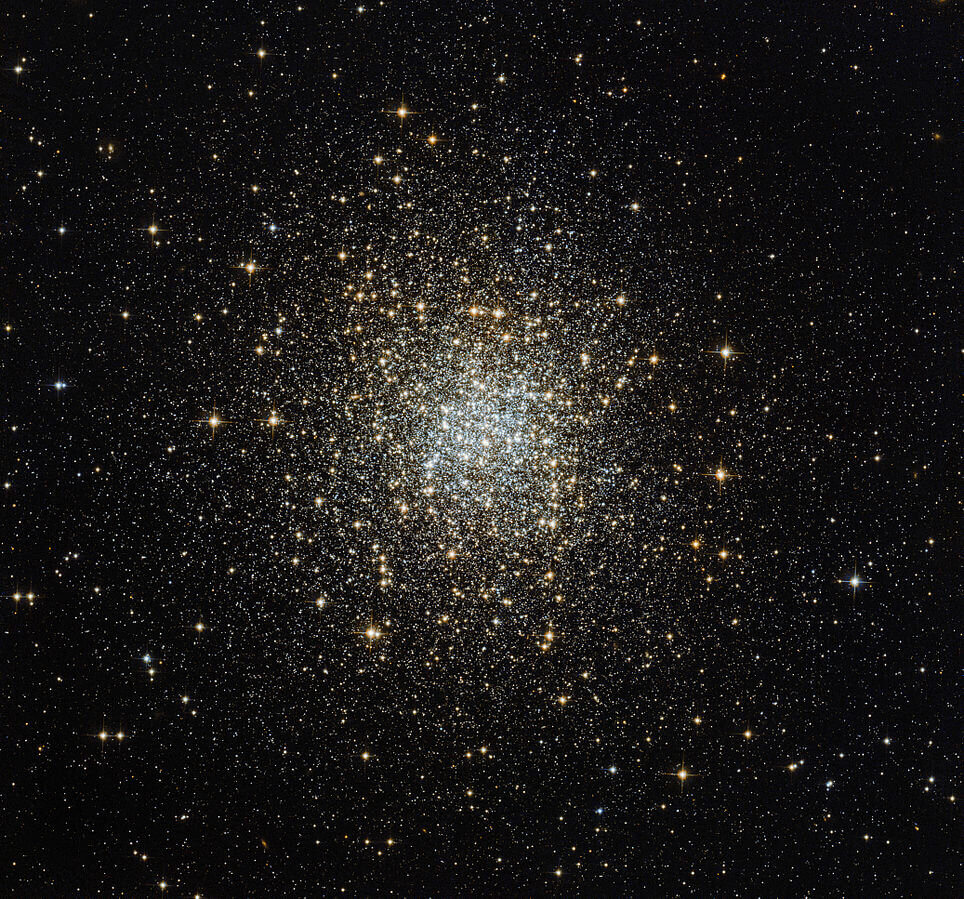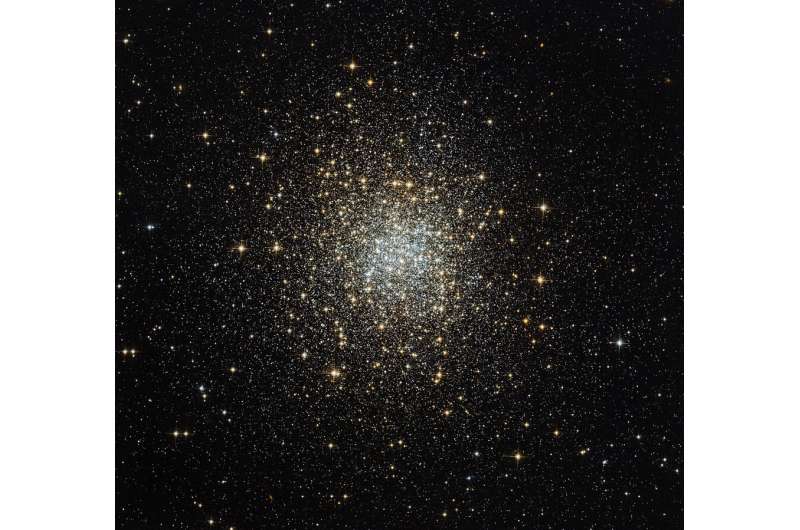
Researchers detect dozens of new variable stars (Image Credit: Phys.org)

By observing the field of globular cluster Palomar 2 with the Indian Astronomical Observatory (IAO), astronomers have discovered 32 new variable stars. The newfound variables are mostly RR Lyrae stars and cluster members. The finding is reported in a paper published August 16 on the arXiv pre-print repository.
Variable stars could offer important hints into aspects of stellar structure and evolution. They could also help us better understand the distance scale of the universe. In particular, the so-called RR Lyrae (RRL) variables are a powerful tool for studying the morphology, metallicity and age of galaxies, especially those with low surface brightness. In general, RRLs are pulsating horizontal branch stars of spectral class A or F, with a mass of around half the sun’s.
Now, a team of astronomers led by Armando Arellano Ferro of the National Autonomous University of Mexico (UNAM) reports the detection of dozens of new variables. The discovery is a result of long-term observations of the field of Palomar 2 with IAO’s 2.0-m telescope. Palomar 2 is a distant globular cluster located some 100,000 light years in the constellation of Auriga and so far no variables have been reported in this stellar grouping.
“A CCD VI imaging time-series over 11-year is employed to explore the light curves of stars in the field of Palomar 2…. The data were obtained between December 12, 2010 and February 12, 2021 with the 2.0-m telescope at the Indian Astronomical Observatory (IAO), Hanle, India,” the researchers wrote in the paper.
All in all, Ferro’s team detected 32 variables. IAO allowed them to discover 20 RR Lyrae variables of RRab type and one of RRc type, and by analyzing the data from ESA’s Gaia satellite they identified 10 more variables and one red-giant branch (RGB) star. Six out of these 10 variable stars were confirmed to be of RRab type.
The astronomers performed a membership analysis of the identified variable stars based on Gaia-DR3 (Data Release 3) proper motions and the positioning of the variables in the corresponding intrinsic color-magnitude diagram (CMD). In result, they found that 18 of them are Palomar 2 cluster members.
Furthermore, based on the collected data, the researchers found that Palomar 2 is located approximately 86,000 light years away from the Earth, therefore nearer than previously estimated. The results also suggest that the cluster’s metallicity is at a level of -1.39, which is in agreement with previous studies.
According to the paper, the average period of the member RRab stars of Palomar 2 turns out to be about 0.55 days. This indicates that Palomar 2 should be classified as an Oosterhoff type I (Oo I) cluster. In general, Oo I clusters contain on average RR Lyrae stars with higher metallicity and shorter pulsation periods.
Explore further
A. Arellano Ferro, I. Bustos Fierro, S. Muneer, S. Giridhar, RR Lyrae stars in the globular cluster Palomar 2. arXiv:2208.07849v1 [astro-ph.SR], arxiv.org/abs/2208.07849
© 2022 Science X Network
Researchers detect dozens of new variable stars (2022, August 22)
retrieved 23 August 2022
from https://phys.org/news/2022-08-dozens-variable-stars.html
part may be reproduced without the written permission. The content is provided for information purposes only.





